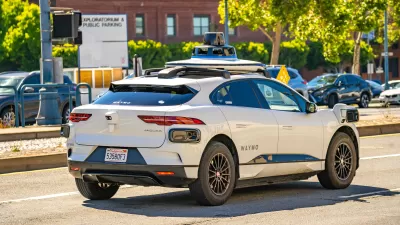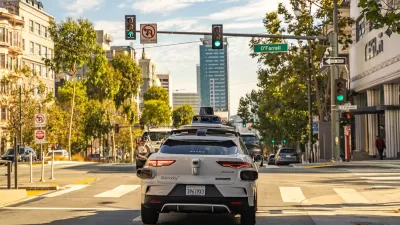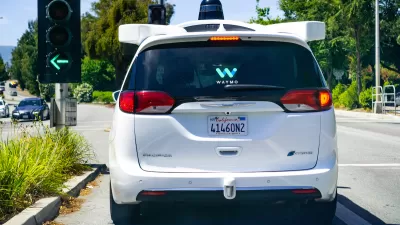One journalist recorded more than a dozen instances of Waymo autonomous cars speeding by when he tried to cross the street.

In a piece for The Washington Post, Geoffrey A. Fowler describes his experience as a pedestrian in San Francisco, where autonomous Waymo taxis are failing to stop for pedestrians in crosswalks.
“When I try to cross my street at a marked crosswalk, the Waymo robotaxis often wouldn’t yield to me. I would step out into the white-striped pavement, look at the Waymo, wait to see whether it’s going to stop — and the car would zip right past,” Fowler writes. In a week, he recorded over a dozen Waymo vehicles that failed to stop when he was crossing a street. Waymo representatives told Fowler that the cars’ software tries to predict whether a pedestrian will really cross. “It’s classic Silicon Valley hubris to assume Waymo’s ability to predict my behavior supersedes a law designed to protect me.”
It is a cautionary tale about how AI, intended to make us more safe, also needs to learn how to coexist with us. The experience has taught my family that the safest place around an autonomous vehicle is inside it, not walking around it.
While human drivers who don’t yield to pedestrians face the risk of a ticket or even jail time, “In California, a computer driver can’t even get a meaningful traffic ticket yet and is certainly not worried about going to jail.” Fowler also notes that cities can empower pedestrians with more safety measures such as flashing lights and signage at crosswalks.
FULL STORY: On roads teeming with robotaxis, crossing the street can be harrowing

Study: Maui’s Plan to Convert Vacation Rentals to Long-Term Housing Could Cause Nearly $1 Billion Economic Loss
The plan would reduce visitor accommodation by 25,% resulting in 1,900 jobs lost.

North Texas Transit Leaders Tout Benefits of TOD for Growing Region
At a summit focused on transit-oriented development, policymakers discussed how North Texas’ expanded light rail system can serve as a tool for economic growth.

Using Old Oil and Gas Wells for Green Energy Storage
Penn State researchers have found that repurposing abandoned oil and gas wells for geothermal-assisted compressed-air energy storage can boost efficiency, reduce environmental risks, and support clean energy and job transitions.

Private Donations Propel Early Restoration of Palisades Playground
Los Angeles has secured over $1.3 million in private funding to restore the Pacific Palisades playground months ahead of schedule, creating a modern, accessible space that supports community healing after recent wildfires.

From Blight to Benefit: Early Results From California’s Equitable Cleanup Program
The Equitable Community Revitalization Grant (ECRG) program is reshaping brownfield redevelopment by prioritizing projects in low-income and environmental justice communities, emphasizing equity, transparency, and community benefits.

Planting Relief: Tackling Las Vegas Heat One Tree at a Time
Nevada Plants, a Las Vegas-based nonprofit, is combating the city’s extreme urban heat by giving away trees to residents in underserved neighborhoods, promoting shade, sustainability, and community health.
Urban Design for Planners 1: Software Tools
This six-course series explores essential urban design concepts using open source software and equips planners with the tools they need to participate fully in the urban design process.
Planning for Universal Design
Learn the tools for implementing Universal Design in planning regulations.
Ascent Environmental
Borough of Carlisle
Institute for Housing and Urban Development Studies (IHS)
City of Grandview
Harvard GSD Executive Education
Toledo-Lucas County Plan Commissions
Salt Lake City
NYU Wagner Graduate School of Public Service





























